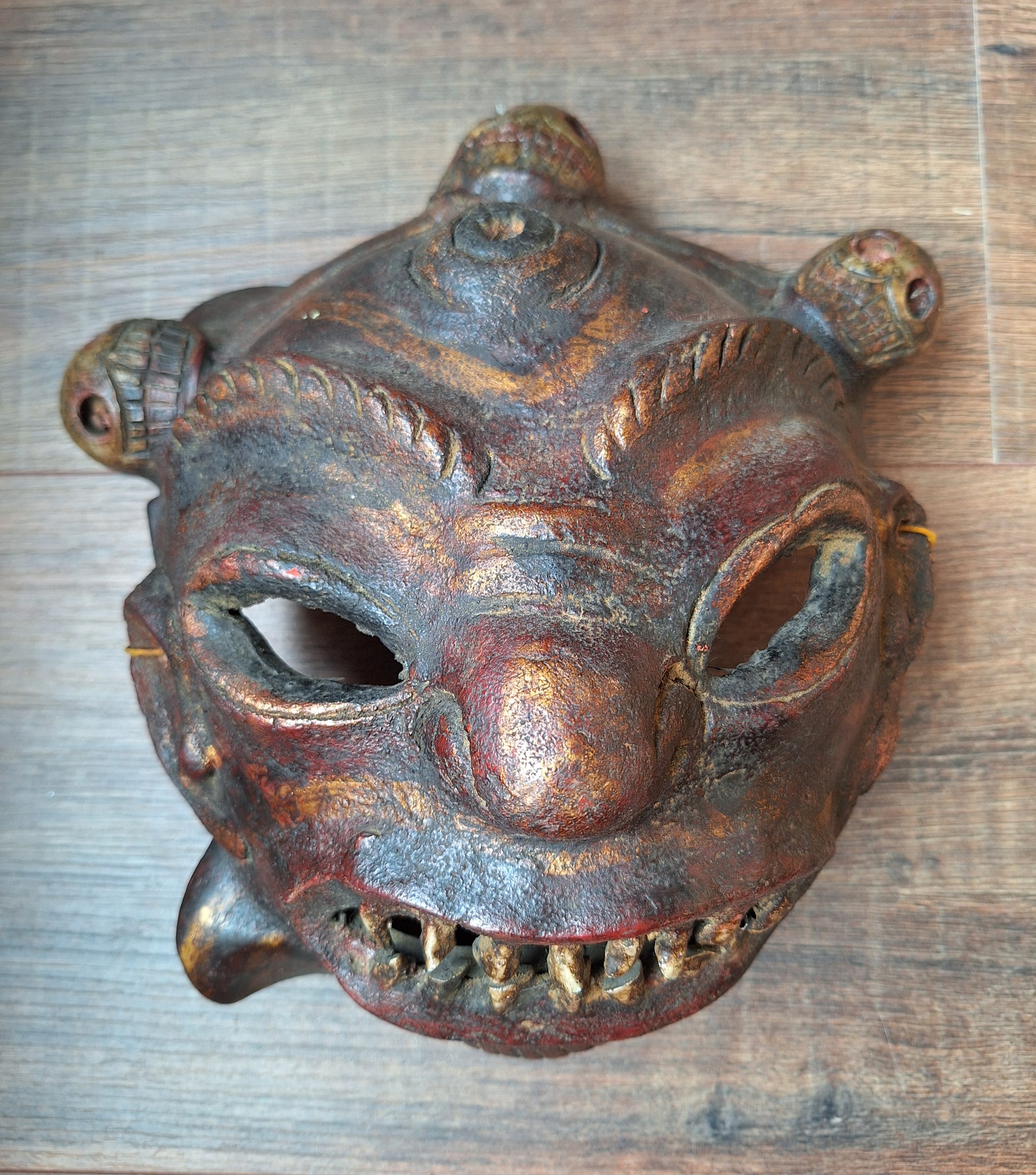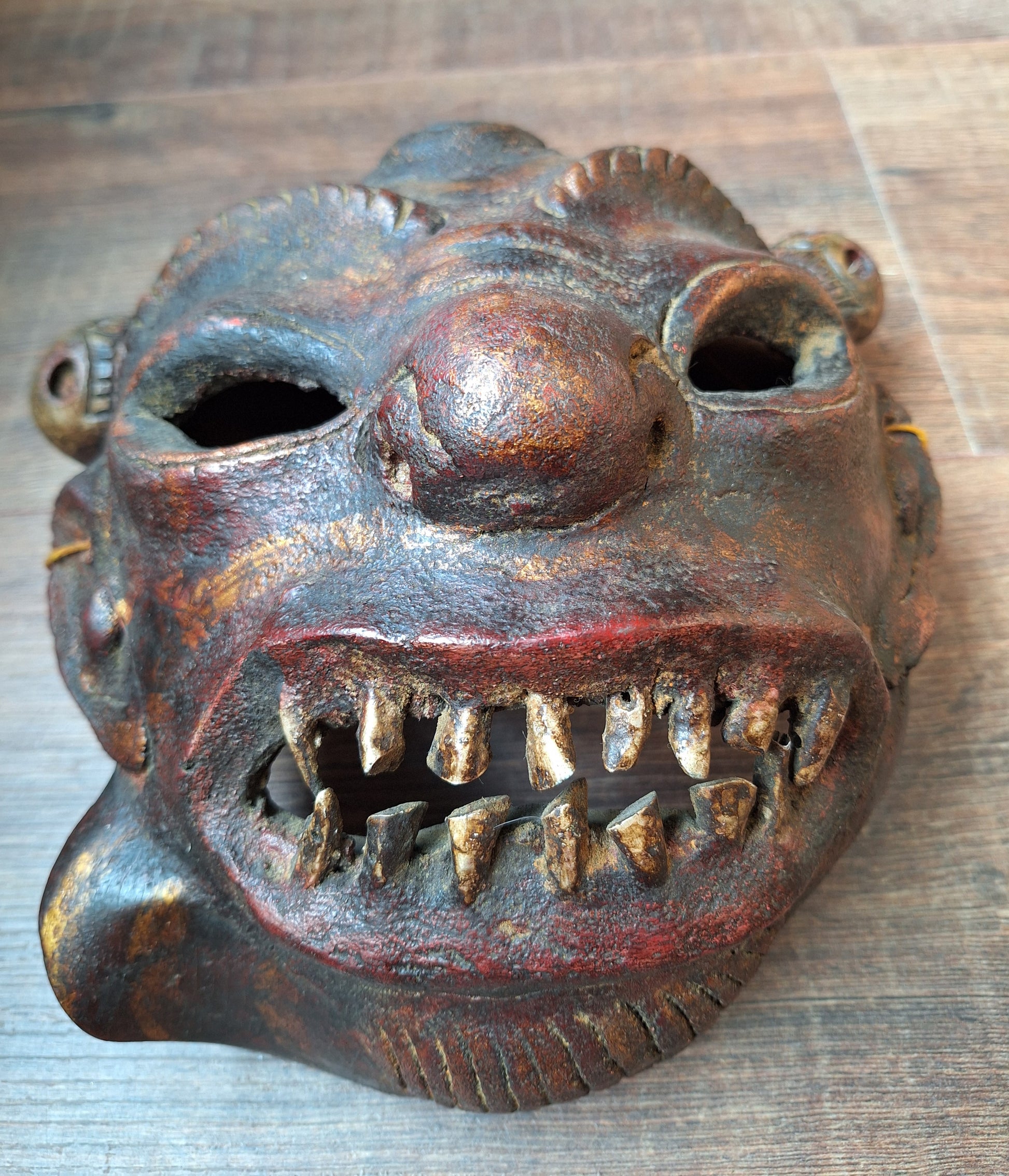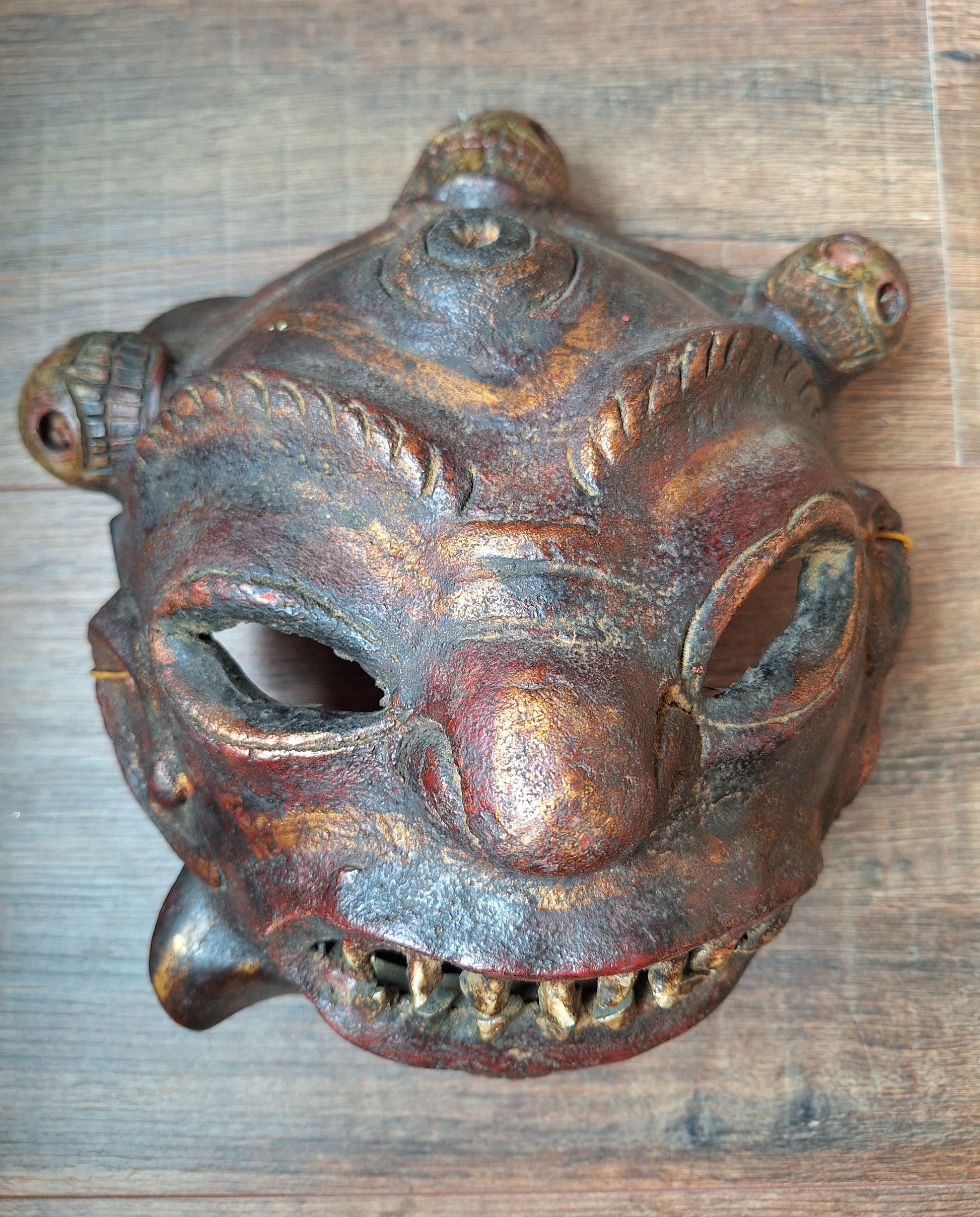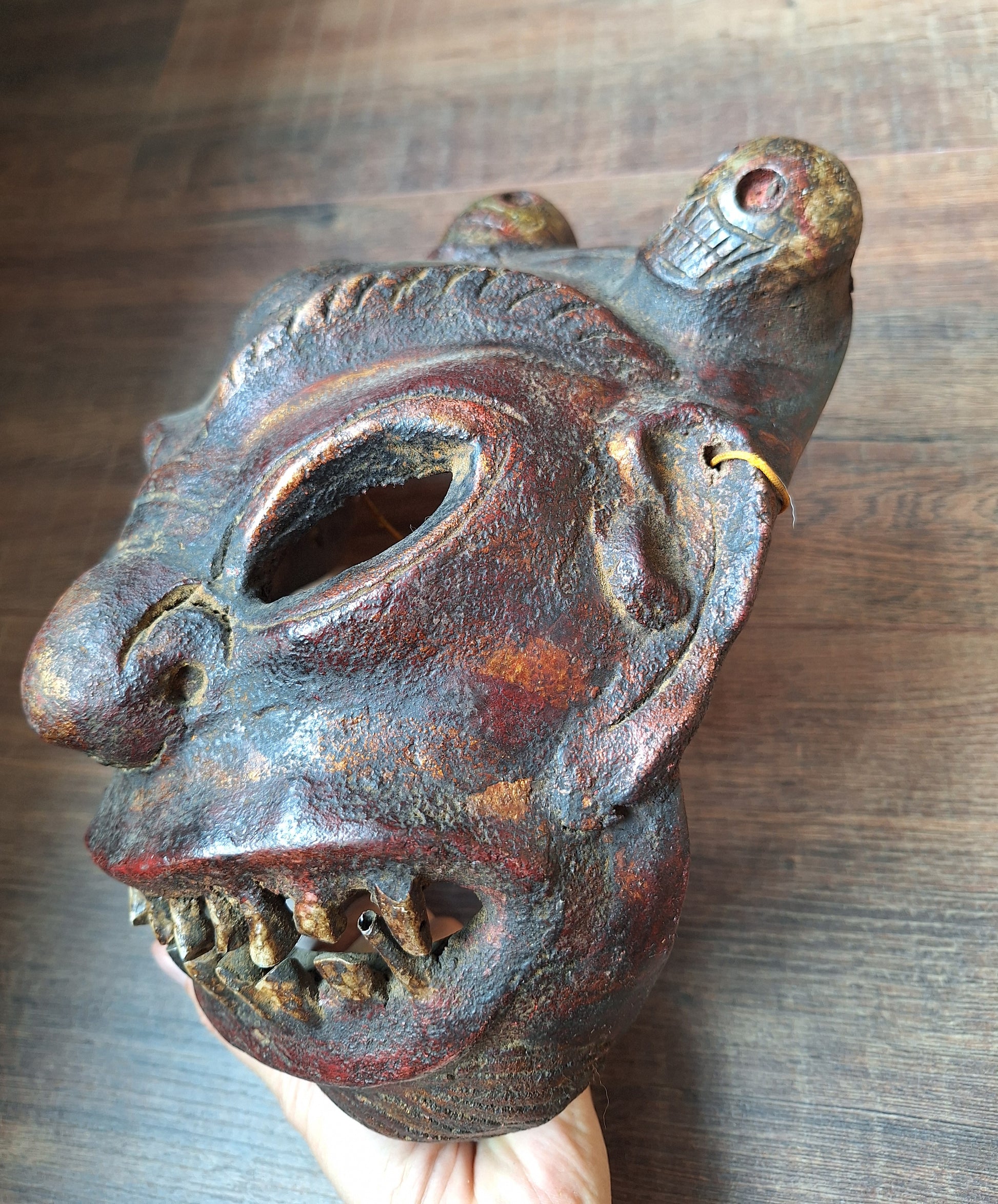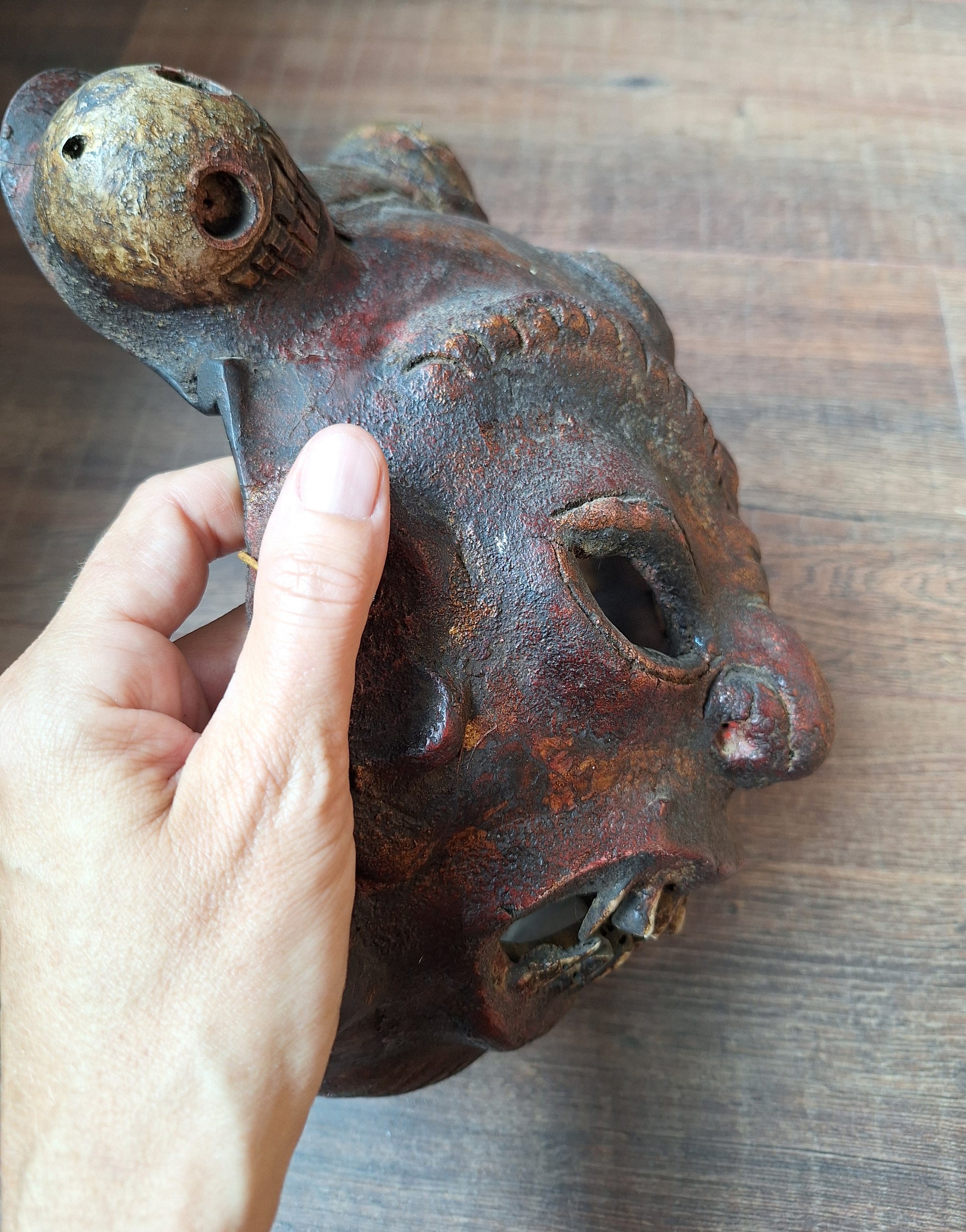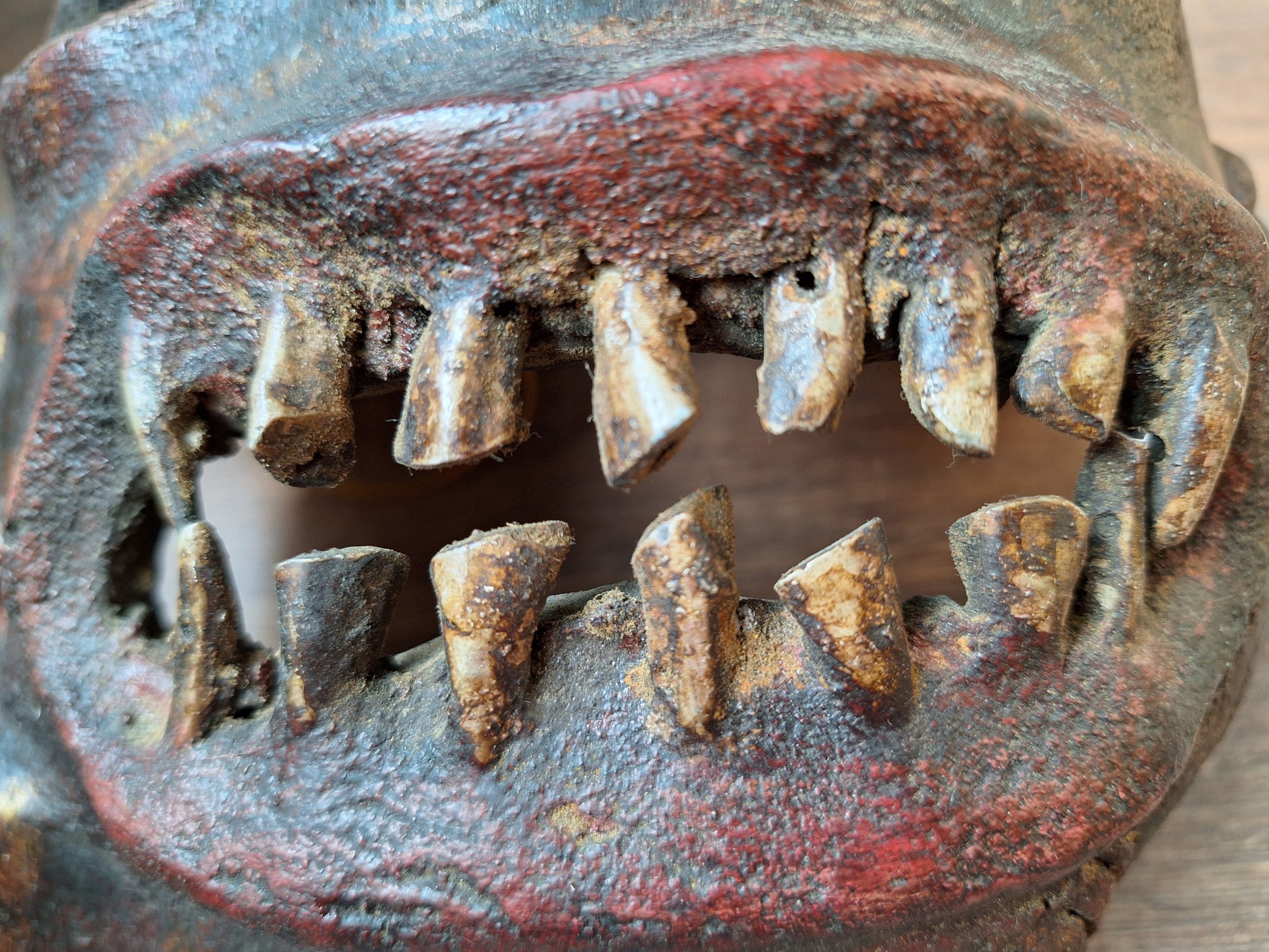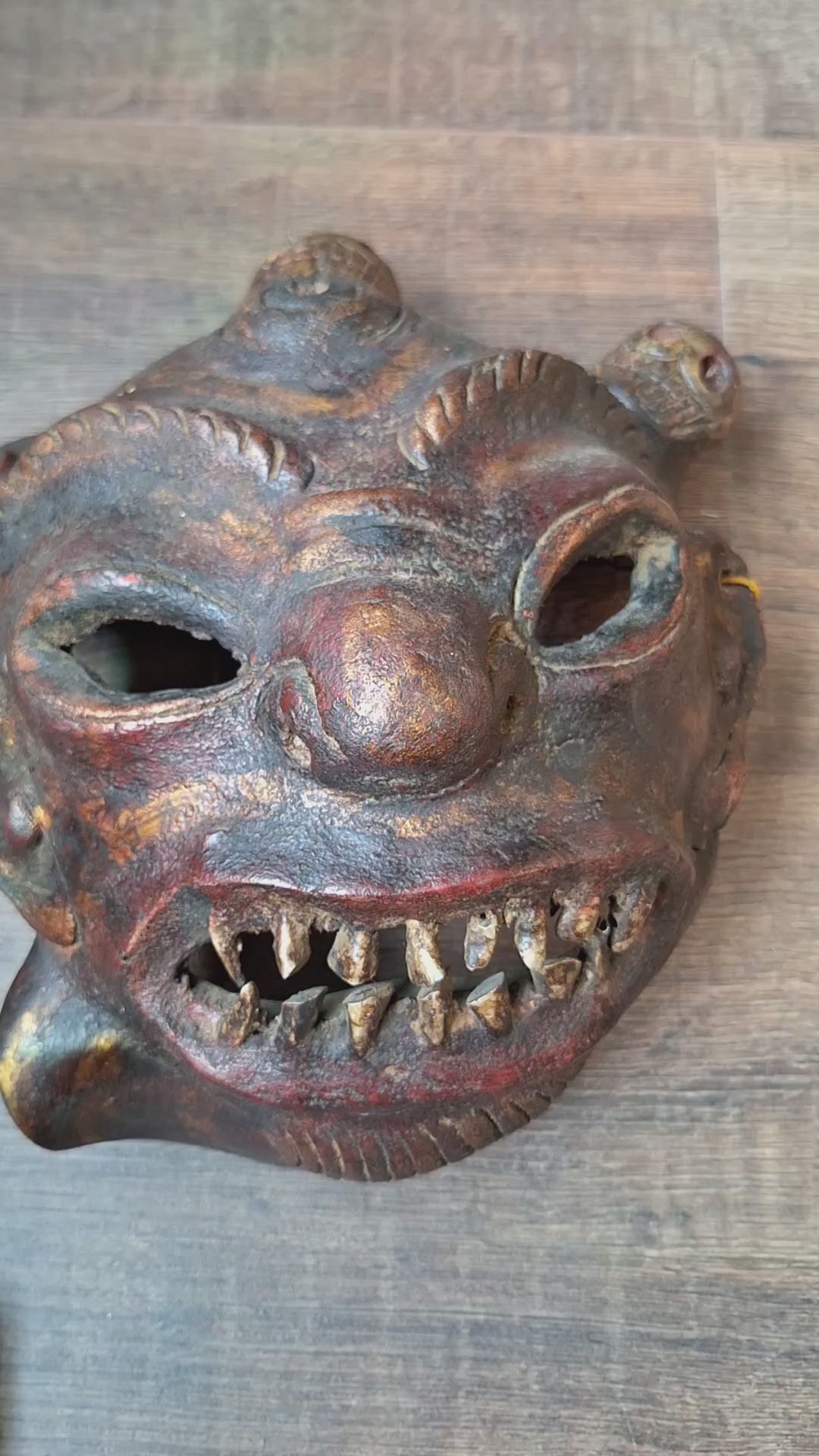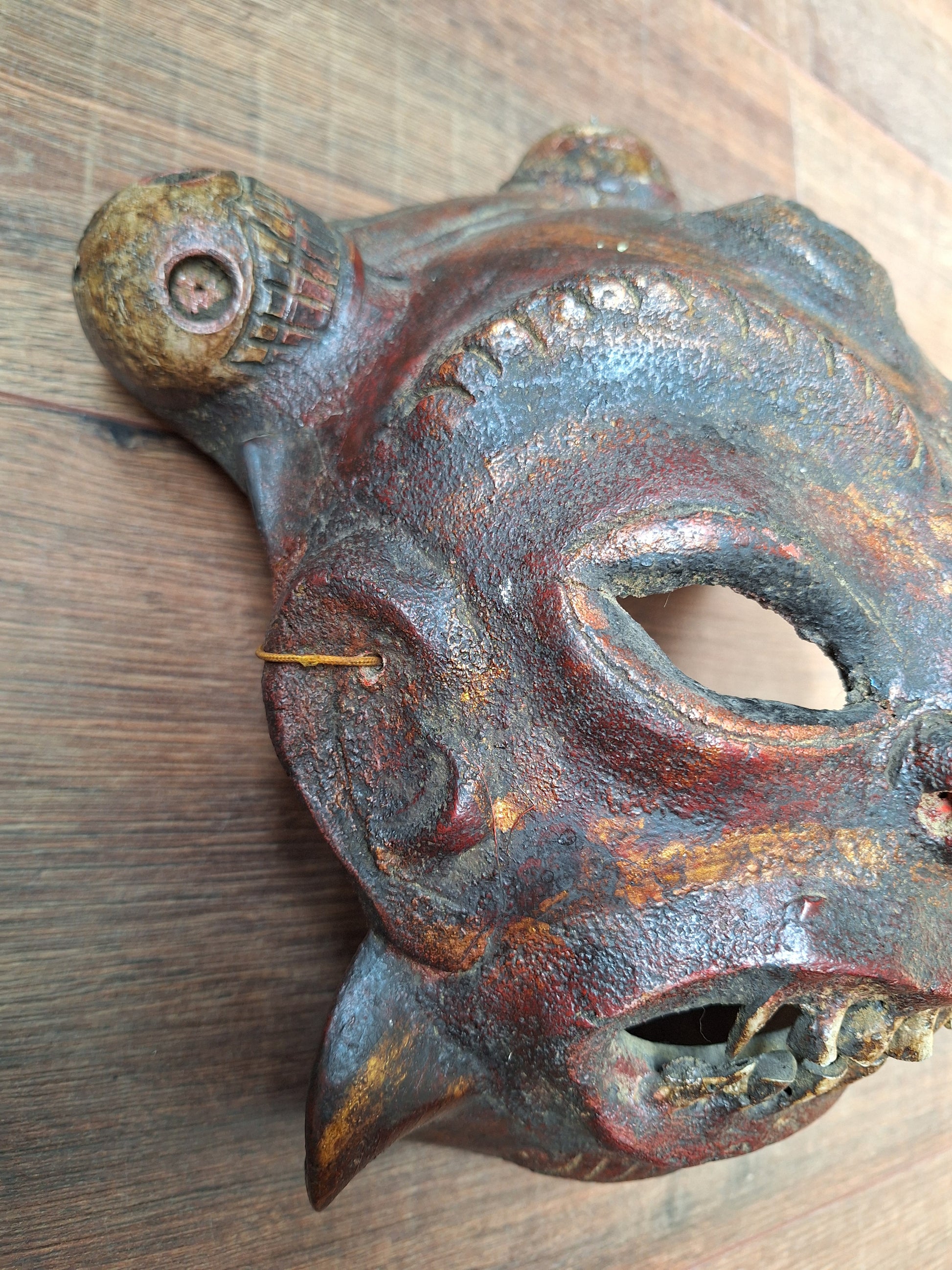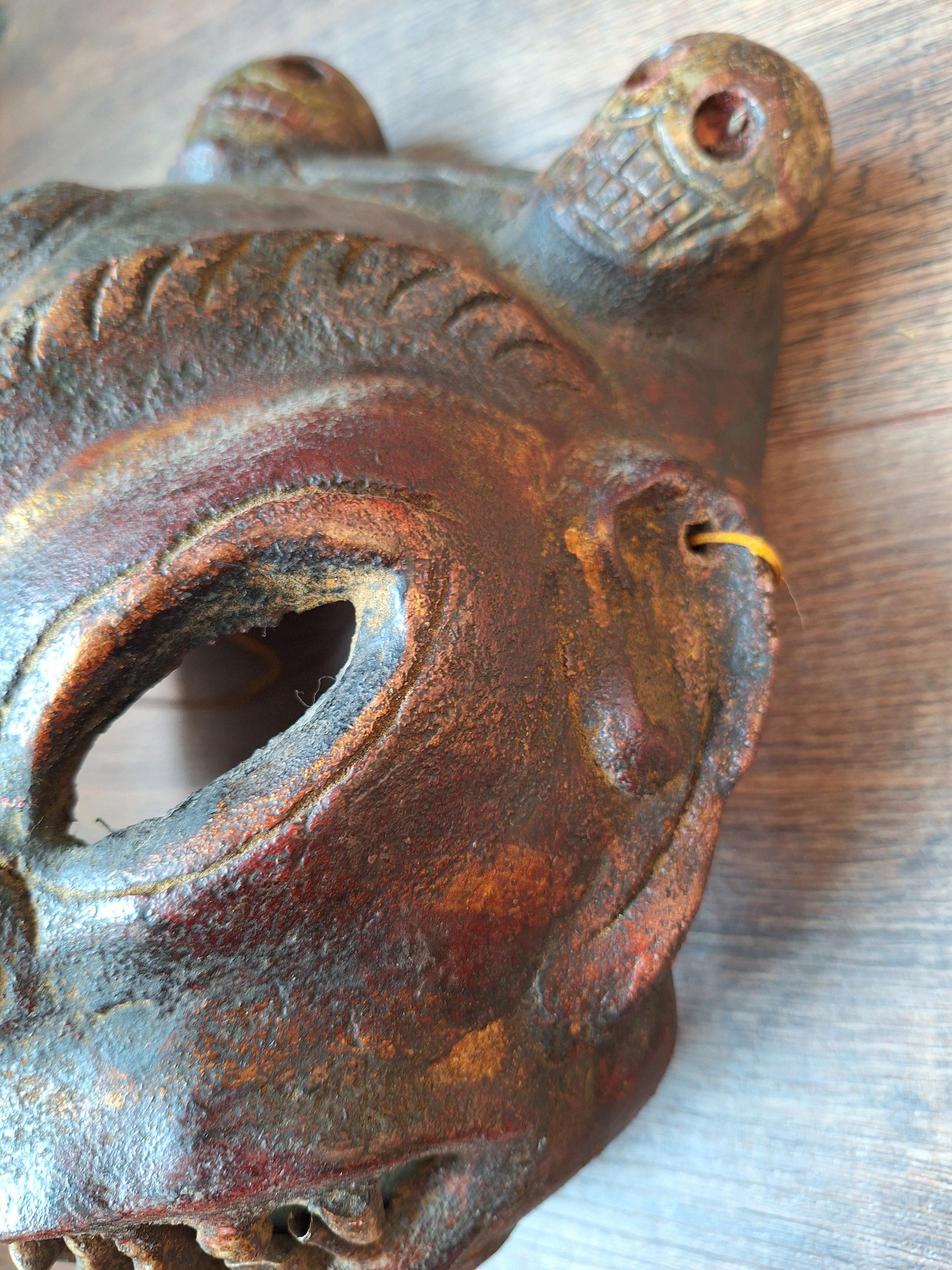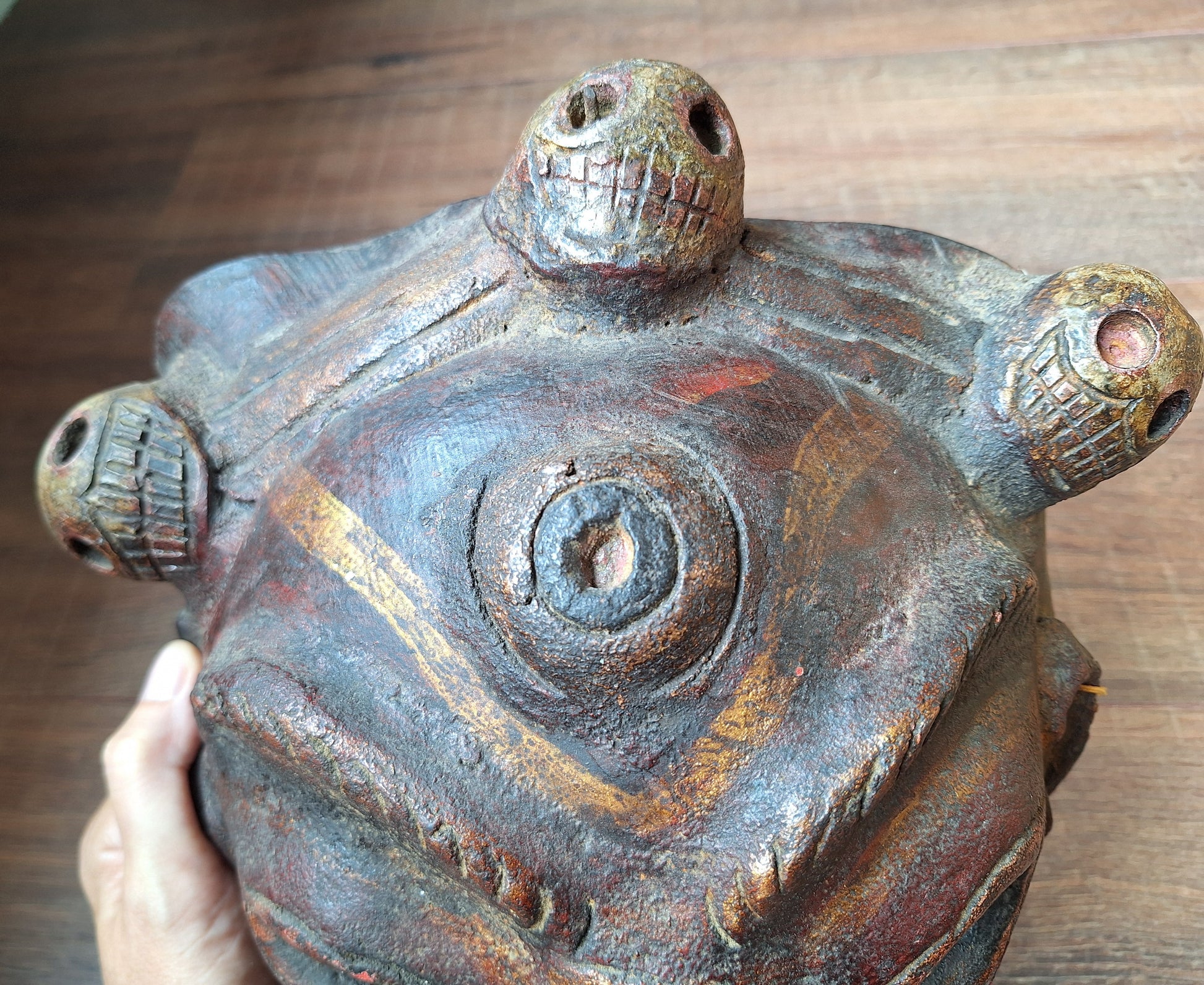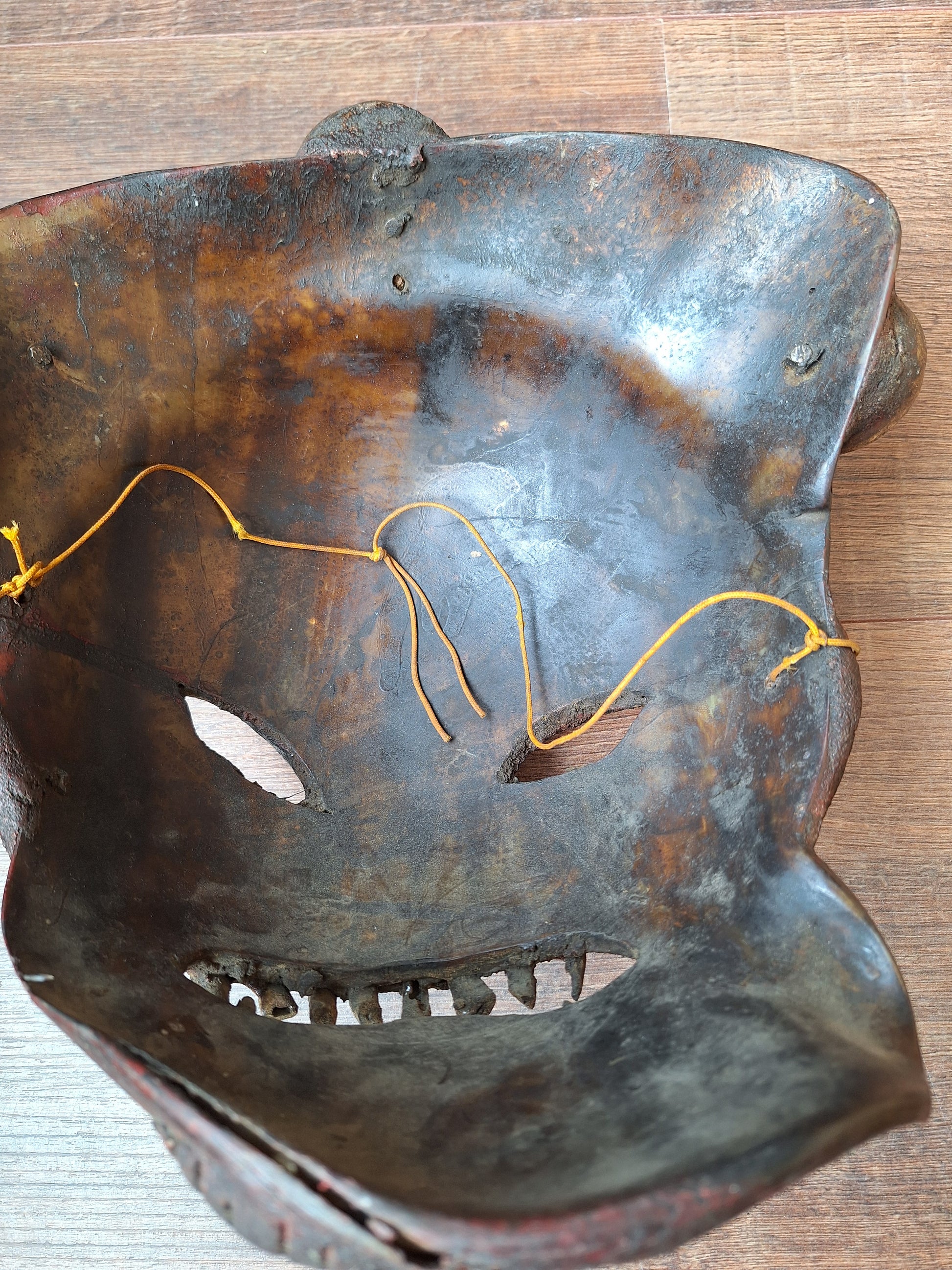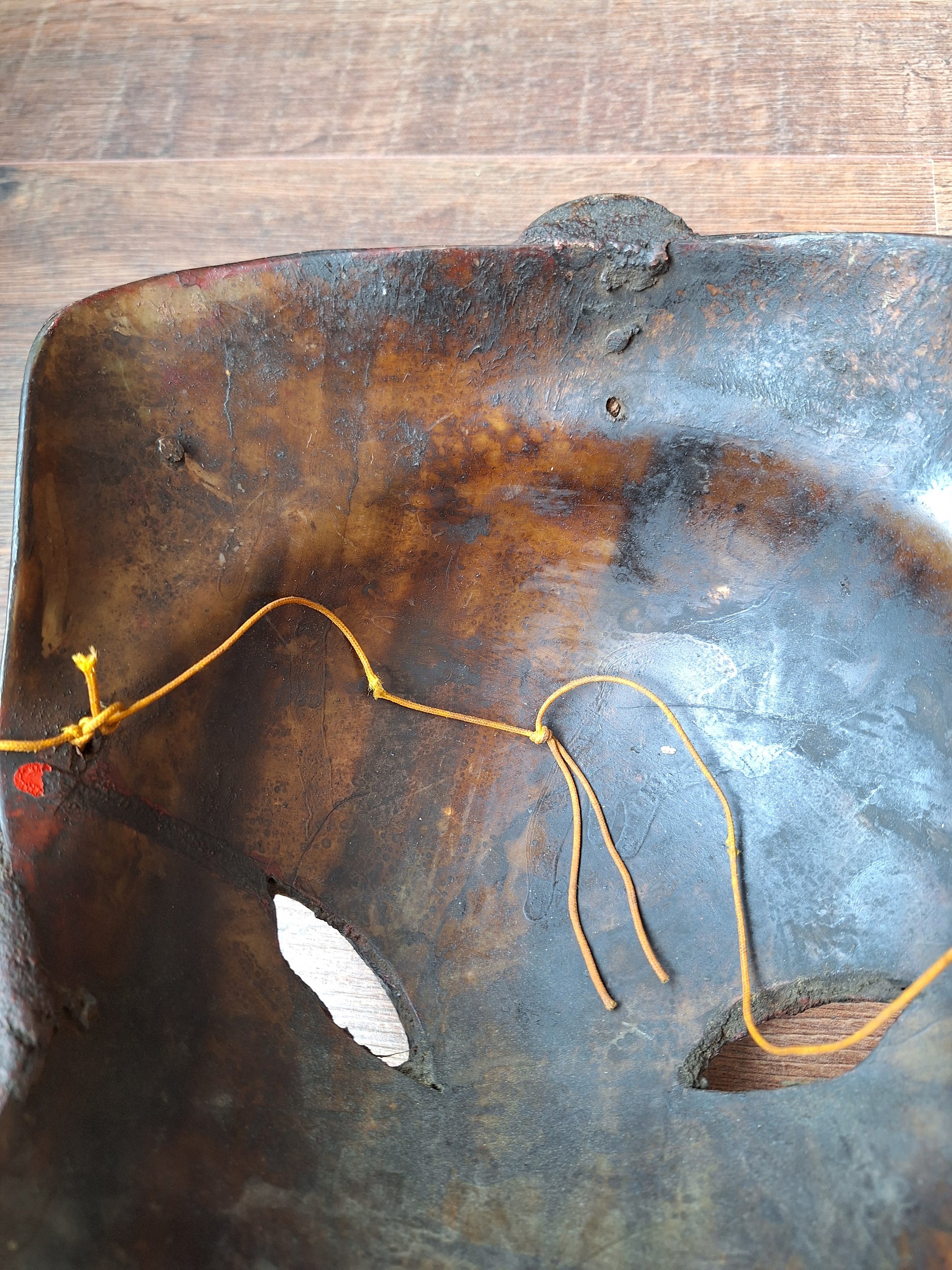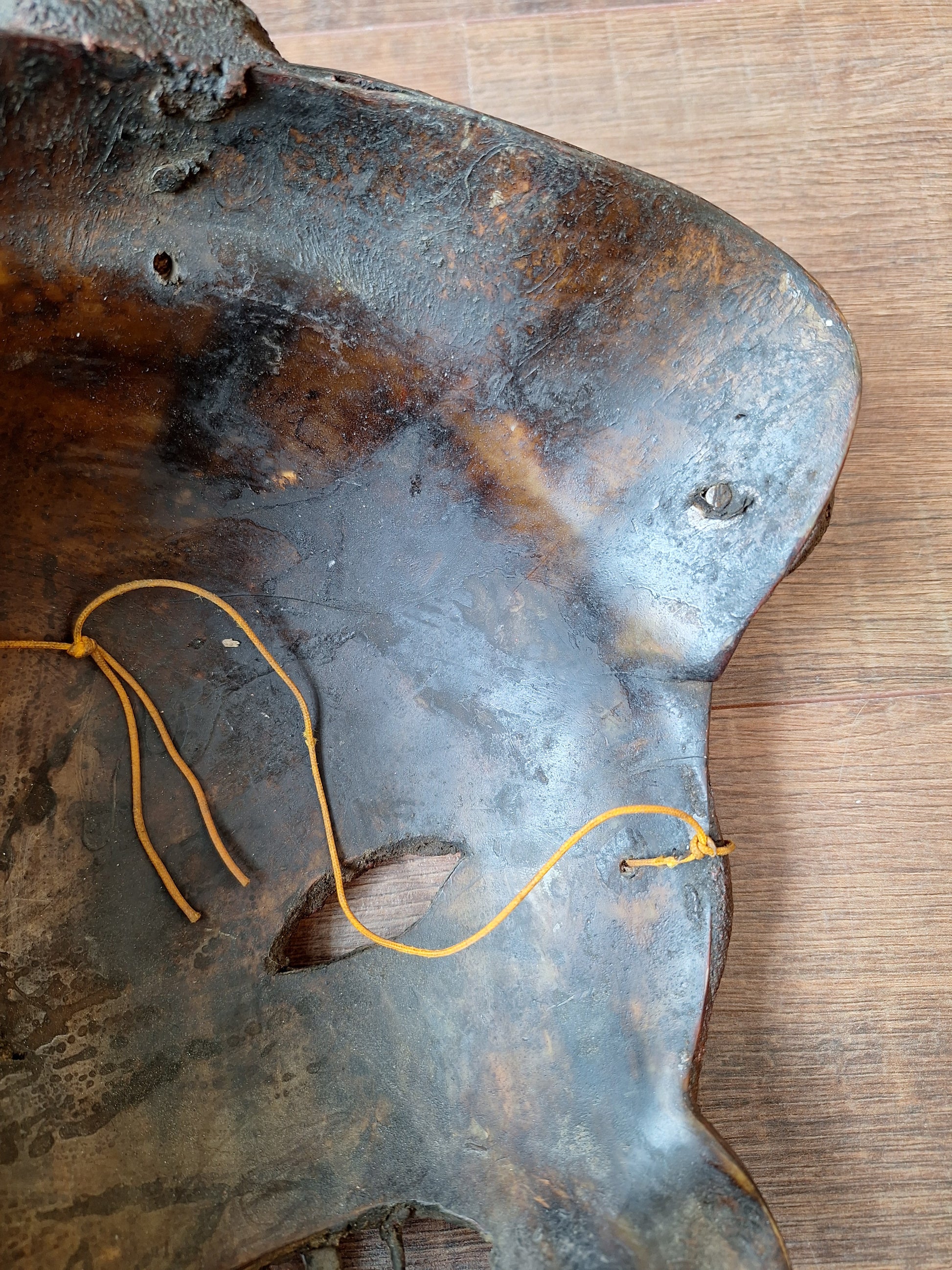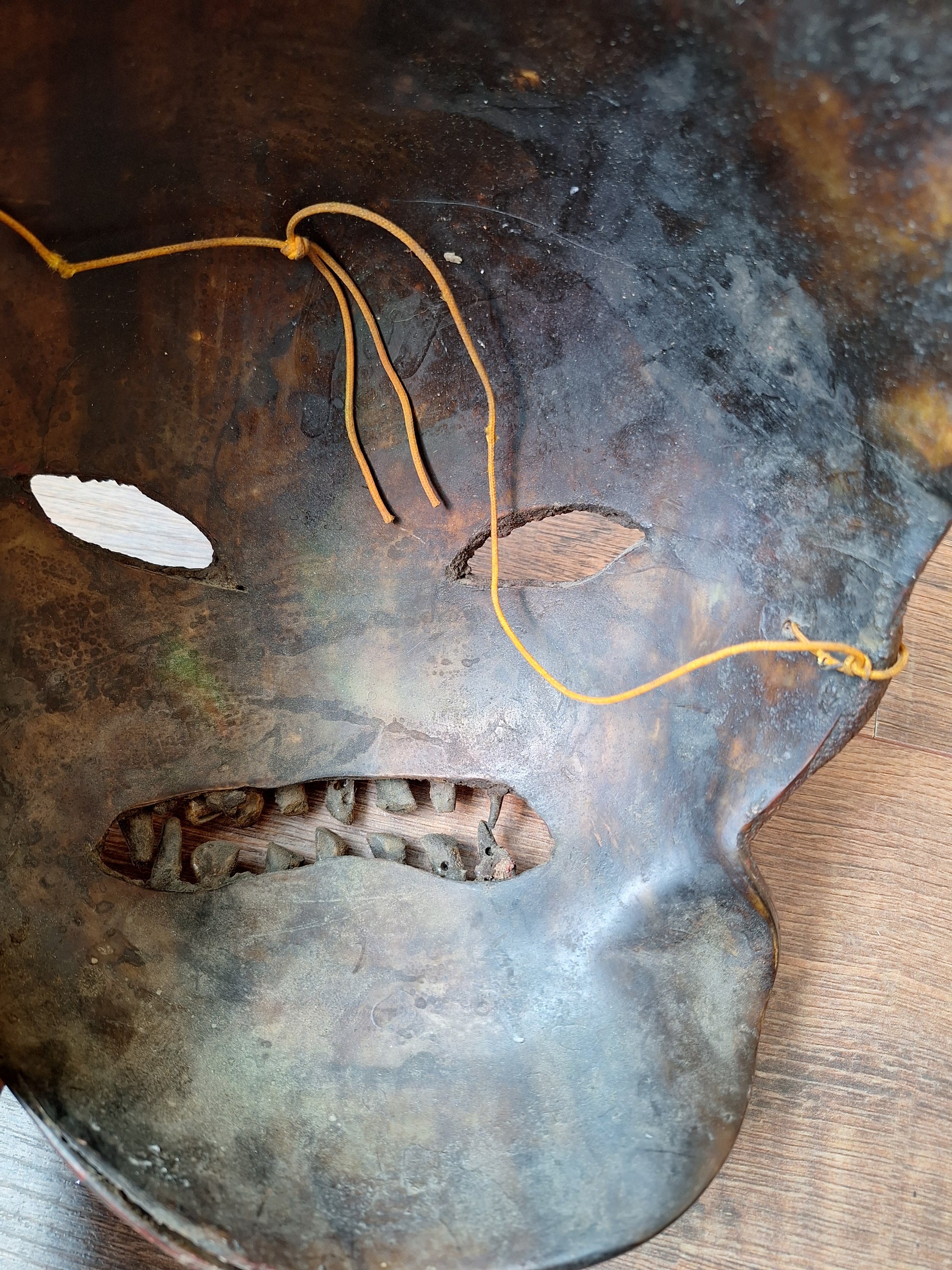Seawolf Shop
Vintage Nepalese wrathful spirit mask from horn
Vintage Nepalese wrathful spirit mask from horn
Couldn't load pickup availability
Share
Amazing Nepalese wrathful spirit mask made from horn. A very rare and unique piece of artisan Himalayan craftmanship.
With special techniques the horn has first been flattened and then molded into the shape of the face. Further facial features have been added with clay, after which the mask has been decorated with red and golden paint and finished with a dark brown varnish. The wrathful-ness of this mask has been made apparent with its crown of three human skulls and a mouth full of teeth, that have been made by adding real animal teeth.
Sizes: approximately 28 centimeters high, 28 centimeters wide and 14 centimeters deep.
Some context on wrathful deities in Himalayan regions:
In Himalayan regions, images of freightening faces of wrathful spirits and deities can be found everywhere. At the entrances of temples or homes, on the walls of altar spaces or practice rooms from a broad range of spiritual practitioners and therapists or simply in a regular living room. They are the houses for these wrathful entities and thus help to guard off all kinds of evil. And, being spirit houses, masks such as these are obviously not seen as mere decorational pieces on the wall. They are regularly fed with offerings from ghee, wodka, milk or incense smoke.
In both (Tibetan) Buddhism and (Shaivist) Hinduism, they often represent the images of the fierce, wrathful aspects or forms of buddha's, bodhisattva's, deva's and deities (beings that have thus both a peaceful, friendly appearance and a forceful, horrifying form). In Tibetan Buddhism they can also be the images of dharmapala's; spirits and gods originating in the Tibetan pre-buddhist indigenous Bon-tradition, that are said to be 'tamed' by Padmasambhava in the 8th century CE and then sworn an oath to protect the buddhist dharma ever since.
The wrathful deities are portrait as terrifying, demonic-looking beings, often further adorned with gruesome ritual attributes and symbolic decorations such as (human) bones and skulls and other items associated with the charnel grounds.
But as terrifying as they might appear, they actually are often driven by compassion. They are very strong and powerful protectors and guides for those on the path to enlightenment, embodying the power and force needed to go forward and overcome and transform all obstacles on the way. They fight against all kinds of demons and evil and in Tibetan Buddhism especially against the enemies of Buddhism.
But not always are these freightening faces specifically to be associated with the wrathful aspect of an identifiable deity. They can also be more ‘random’, general, anonymous wrathful faces working from the age old adage of “scaring away evil forces with an even more terrifying and forceful one”. And because the depictions of these more general wrathful spirits are of course not bound to the restrictions of the iconography of a certain specific deity, their depictions often consist of the most gruesome details their artist could come up with; the most demonic facial expressions combined with sharp teeth, a devilish pair of horns, skull ornaments etc.
Images from wrathful deities and spirits have also found their way into some classical shamanic lineages, such as the lineage of Spirit of Wolf. Here they are also associated with Erlik Han, Lord of the Underworld, and as such mostly used by black shamans.













